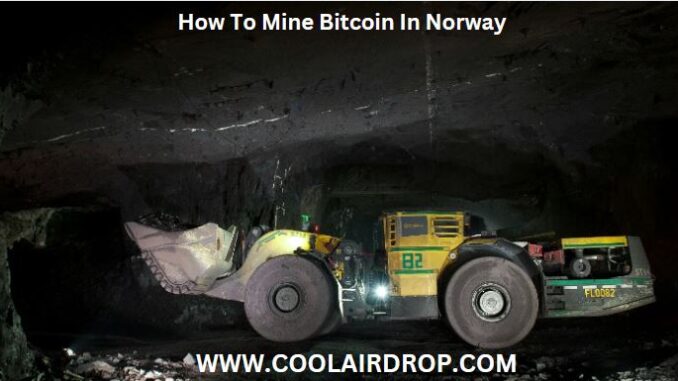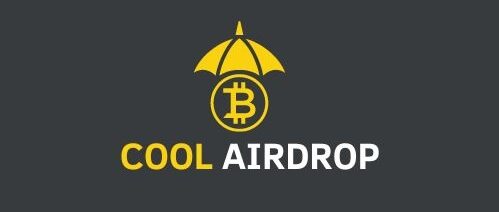
How To Mine Bitcoin In Norway: Bitcoin mining has become a global phenomenon, and Norway is one of the best places to mine Bitcoin. With its abundance of cheap, renewable energy and progressive stance on digital currencies, Norway offers a favorable environment for those looking to get into the world of crypto mining.
But how exactly do you mine Bitcoin in Norway? What’s involved? And most importantly, is it worth it?
In this guide, we’ll walk you through everything you need to know about mining Bitcoin in Norway, including the hardware and software you’ll need, the cost of mining, and the legal framework.
Whether you’re just starting out or looking to optimize your existing setup, this article will provide all the insights you need to mine Bitcoin successfully in Norway.
Also, Read
How To Avoid Crypto Scams In Norway
How to Set Up a Crypto Portfolio in Norway
Mining Bitcoin in Norway
Bitcoin mining is the process of solving complex mathematical puzzles to validate transactions on the Bitcoin network. Miners use high-powered computers, known as mining rigs, to solve these puzzles and, in return, are rewarded with newly minted Bitcoin.
Norway is an attractive location for mining Bitcoin due to its abundant supply of renewable energy. The country is powered by hydropower, which accounts for more than 90% of its electricity. This makes mining operations in Norway more eco-friendly and cost-effective compared to other countries that rely on fossil fuels.
In addition, Norway’s cold climate helps keep mining rigs cool, reducing the need for expensive cooling systems. When combined with affordable electricity prices, this makes the country one of the most efficient places to mine Bitcoin.
How Long Does It Take to Mine 1 Bitcoin?
The time it takes to mine 1 Bitcoin depends on several factors, including:
- Hashrate of your mining equipment: The more powerful your mining rig, the faster you can process transactions.
- Bitcoin network difficulty: The difficulty level of the mining process adjusts every two weeks based on the total computing power of the network. As more miners join the network, the difficulty increases, making it harder to mine Bitcoin.
- Mining Pool vs. Solo Mining: Solo mining means you’re mining Bitcoin by yourself, while in a mining pool, you collaborate with other miners. Mining pools increase your chances of earning Bitcoin regularly, but rewards are shared among all members.
On average, with high-performance mining equipment (ASIC miners), it can take anywhere from 10 minutes to a few hours to mine 1 Bitcoin.
However, solo miners may never mine 1 Bitcoin by themselves, as it could take years depending on their hashrate and the network’s difficulty.
This is why most people join mining pools, where the reward is shared among participants based on the computational power they contribute.
How to Get Bitcoin in Norway?
There are several ways to get Bitcoin in Norway:
- Buy Bitcoin on an Exchange: You can buy Bitcoin through cryptocurrency exchanges like CEX.IO, Coinbase, Binance, or Kraken. Simply register, deposit NOK or another fiat currency, and purchase Bitcoin.
- Bitcoin ATMs: Bitcoin ATMs are available in several cities in Norway, including Oslo, Bergen, and Stavanger. These machines allow you to purchase Bitcoin with cash, though they often come with higher fees compared to online exchanges.
- Mining Bitcoin: As discussed in this guide, Bitcoin mining is another way to acquire Bitcoin, though it requires significant upfront investment in mining equipment and ongoing electricity costs.
- Peer-to-Peer Transactions: You can also purchase Bitcoin directly from other individuals using peer-to-peer platforms, where you can negotiate the price and payment method.
Can I Mine Bitcoin Legally in Norway?
Yes, mining Bitcoin is completely legal in Norway. The country has a progressive stance on cryptocurrencies and allows both individuals and businesses to mine, buy, and sell Bitcoin without any legal restrictions.
However, there are a few legal obligations that miners must adhere to:
- Taxation: Like other crypto activities, Bitcoin mining in Norway is subject to tax. Profits from mining are treated as business income, and miners must report their earnings to the Norwegian Tax Administration (Skatteetaten). The tax rate can be as high as 22% for individuals, and higher for businesses.
- Electricity Consumption: Mining requires a lot of energy, and while Norway’s renewable energy is cheap, miners still need to comply with local regulations concerning electricity usage, especially if they are running large-scale operations.
In short, as long as you follow the tax rules and ensure you’re using electricity responsibly, you can mine Bitcoin legally in Norway.
How Do I Start Bitcoin Mining?
Getting started with Bitcoin mining in Norway is a straightforward process, but it requires a significant investment in both time and money. Here’s a step-by-step guide to help you start mining:
1. Choose Your Mining Hardware
The most important part of mining is choosing the right hardware. For Bitcoin, the best option is to use ASIC (Application-Specific Integrated Circuit) miners, which are designed specifically for mining Bitcoin. Popular ASIC miners include:
- Antminer S19 Pro (one of the most powerful and efficient)
- MicroBT Whatsminer M30S
- Bitmain Antminer S9 ASIC miners can cost anywhere from $500 to $10,000 USD, depending on the model and its performance.
2. Set Up a Wallet
To receive your Bitcoin rewards, you’ll need a secure wallet to store your mined coins. Some popular wallet options include:
- Trust Wallet (mobile-friendly)
- Exodus Wallet (supports multiple cryptos)
- Ledger Nano X (hardware wallet for extra security)
3. Join a Mining Pool
As a solo miner, the chances of mining a full Bitcoin are low due to the high competition. Mining pools allow miners to collaborate and share resources. Popular mining pools include:
- Slush Pool
- F2Pool
- Antpool When you join a mining pool, you receive a share of the Bitcoin rewards based on the computing power you contribute.
4. Select Your Software
You’ll need software to control your mining rig and connect to the Bitcoin network. Common mining software includes:
- CGMiner (open-source and widely used)
- BFGMiner (another popular open-source option)
- NiceHash (easy-to-use for beginners)
5. Start Mining
Once you’ve set up everything, you can begin the mining process. The software will link your hardware to the Bitcoin network, and the mining rig will start solving mathematical puzzles to validate transactions.
Can I Mine Bitcoin for Free?
While it’s technically possible to mine Bitcoin without directly paying for mining equipment (such as using free software or cloud mining services), in practice, mining Bitcoin for free is highly unlikely. Here’s why:
- Mining Hardware: ASIC miners are expensive, and free mining services are often scams or offer very low returns.
- Electricity Costs: Mining requires a substantial amount of electricity. While Norway’s electricity is cheap, it is not free, and you will still need to cover the cost of power.
Some websites or cloud mining services might promise “free” mining, but in most cases, these platforms are not profitable, or they have hidden fees that will eat into any earnings.
How Much Does It Cost to Mine 1 Bitcoin?
The cost of mining 1 Bitcoin depends on several factors, such as:
- Hardware: High-performance ASIC miners like the Antminer S19 Pro can cost several thousand dollars.
- Electricity Costs: Norway’s electricity prices are relatively low, especially compared to other countries, but the cost will still add up over time. The average cost of mining 1 Bitcoin in Norway is estimated to be between $4,000 and $6,000 USD.
- Mining Pool Fees: If you join a mining pool, you’ll need to pay a small fee (usually 1-3%) on the rewards you earn.
With these factors in mind, mining Bitcoin in Norway can still be profitable, especially if you have access to affordable and renewable energy.
Is It Hard to Mine Bitcoin?
Mining Bitcoin is not easy. It requires significant technical knowledge, a hefty investment in specialized equipment, and patience. The difficulty level of Bitcoin mining has increased over time as more miners join the network and the hashrate increases.
Additionally, setting up and maintaining mining rigs, managing electricity usage, and troubleshooting hardware issues can be challenging for beginners. However, if you are dedicated and willing to learn, Bitcoin mining can still be a rewarding venture.
Can You Mine 1 Bitcoin a Day?
While it’s possible to mine 1 Bitcoin in a day, it’s highly unlikely for most individual miners, especially if you’re mining solo. The Bitcoin network’s difficulty level adjusts regularly, and it can take years to mine a single Bitcoin with typical consumer-grade hardware.
In a mining pool, however, you will receive a share of the reward, and your earnings will be more consistent, though smaller. So while you may not mine 1 Bitcoin every day, you can earn Bitcoin regularly by contributing to the network.
Can You Mine Bitcoin on Your Phone?
While it is technically possible to mine Bitcoin on your smartphone, it is not profitable. Smartphone
processors are not designed for the heavy computational power required for mining, and the energy consumption of running a mining app on your phone is much higher than any potential rewards.
In fact, mining Bitcoin on your phone could damage the device due to overheating, and you will likely earn only tiny fractions of Bitcoin that are not worth the effort or cost involved.
Conclusion
Mining Bitcoin in Norway is a potentially profitable venture, especially with the country’s cheap and renewable energy sources. While it requires a significant upfront investment in equipment and a solid understanding of the mining process, the rewards can be substantial if done correctly.
By following the steps outlined in this guide, you can get started with Bitcoin mining in Norway, whether you’re mining on a small scale or considering a larger operation. Remember, mining is not a get-rich-quick activity—it takes time, effort, and resources. But if you’re willing to invest in the right equipment, learn the ins and outs of mining, and stay updated on the market, you can make mining a successful venture.
Good luck, and happy mining!

Leave a Reply